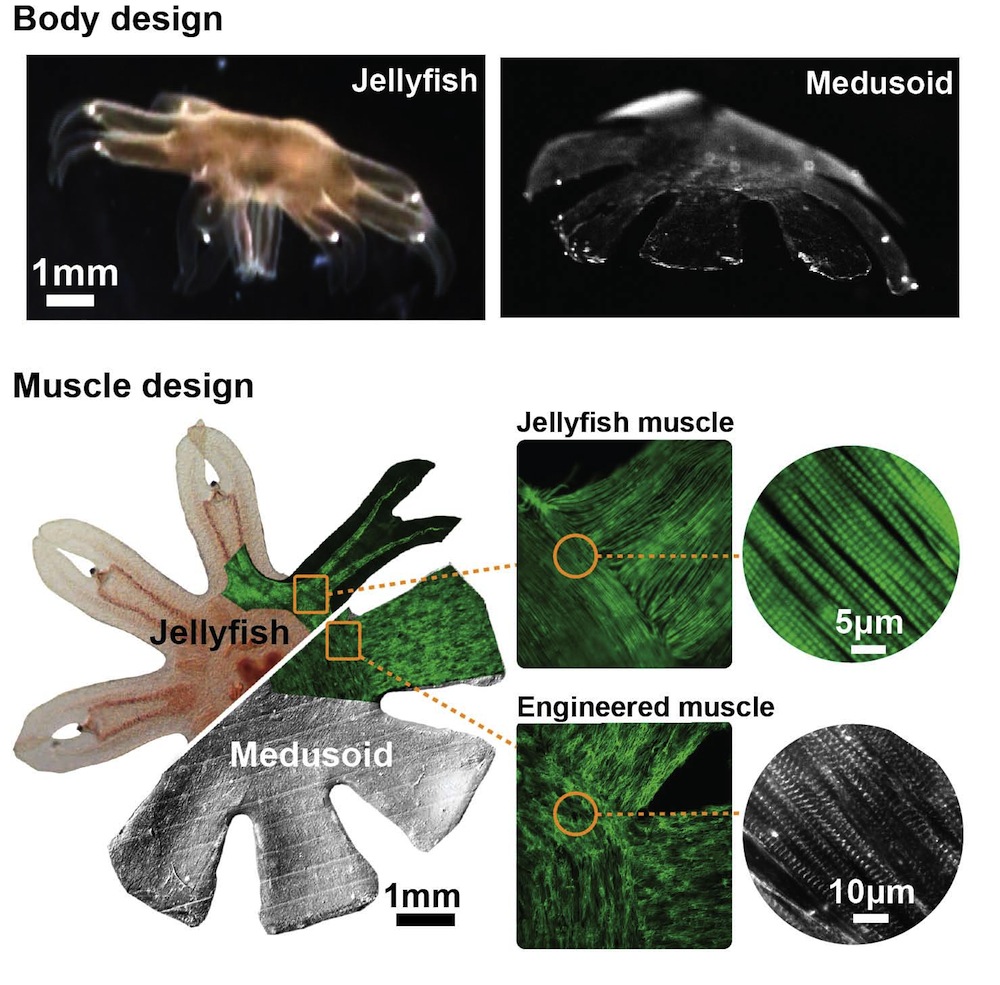Swimming 'Jellyfish' Built out of Rat Cells & Silicone

Using rat heart cells and silicone polymer, researchers have bioengineered a "jellyfish" that knows how to swim.
The odd jellyfish mimic, dubbed a "Medusoid" by its creators, is more than a curiosity. It's a natural biological pump, just like the human heart. That makes it a good model to use to study cardiac physiology, said study researcher Kevin Kit Parker, a bioengineer at Harvard University.
"The idea is to look at a muscular pump other than the heart or other muscular organ and see if there are some fundamental similarities, or design principles, that are conserved across them," Parker told LiveScience. "This study revealed that there are." [10 Amazing Facts About Your Heart]
Building a jelly
Jellyfish propel themselves with a pumping action, as anyone who has ever watched them float around an aquarium tank can attest. Parker was looking for a way to tackle questions about the heart that aren't well understood when he saw some jellyfish in a display in 2007.
"I thought, 'I can build this,'" he said.
The ingredients were rat heart muscle cells and a thin silicone film. ("The world needs less rats and more jellyfish, so I thought it would be cool to do a one-for-one swap," Parker joked.) Along with researchers from the California Institute of Technology, he and his team engineered the cells and silicone in a pattern that mimicked the structure of a real jellyfish. They then stuck the creature in a tank full of electrically conducting fluid and zapped it with current.
Get the world’s most fascinating discoveries delivered straight to your inbox.
The result was a swimming, pulsating creature that acts not unlike a real jellyfish (without the eating and reproducing, of course).
Jellyfish for tissue engineering
These artificial jellies can solve different problems for different scientists, Parker said. A marine biologist might learn more about the architecture of a jellyfish and how it swims. A comparative biologist can compare the pumping action of the Medusoid to that of the heart. For tissue engineers, the exercise was a lesson in design and quality control. And for biological proponent experts, the system is a model that mimics how real propulsive swimmers do it.
Parker is interested in using the Medusoids for cardiovascular drug development and as a step in new designs for artificial hearts. He also has plans to go bigger.
The next step, he said, is to "pick another animal that has a more difficult anatomy and function, and build it. Give me a year or two!"
Parker and his colleagues report their results today (July 22) in the journal Nature Biotechnology.
Follow Stephanie Pappas on Twitter @sipappas or LiveScience @livescience. We're also on Facebook & Google+.

Stephanie Pappas is a contributing writer for Live Science, covering topics ranging from geoscience to archaeology to the human brain and behavior. She was previously a senior writer for Live Science but is now a freelancer based in Denver, Colorado, and regularly contributes to Scientific American and The Monitor, the monthly magazine of the American Psychological Association. Stephanie received a bachelor's degree in psychology from the University of South Carolina and a graduate certificate in science communication from the University of California, Santa Cruz.



